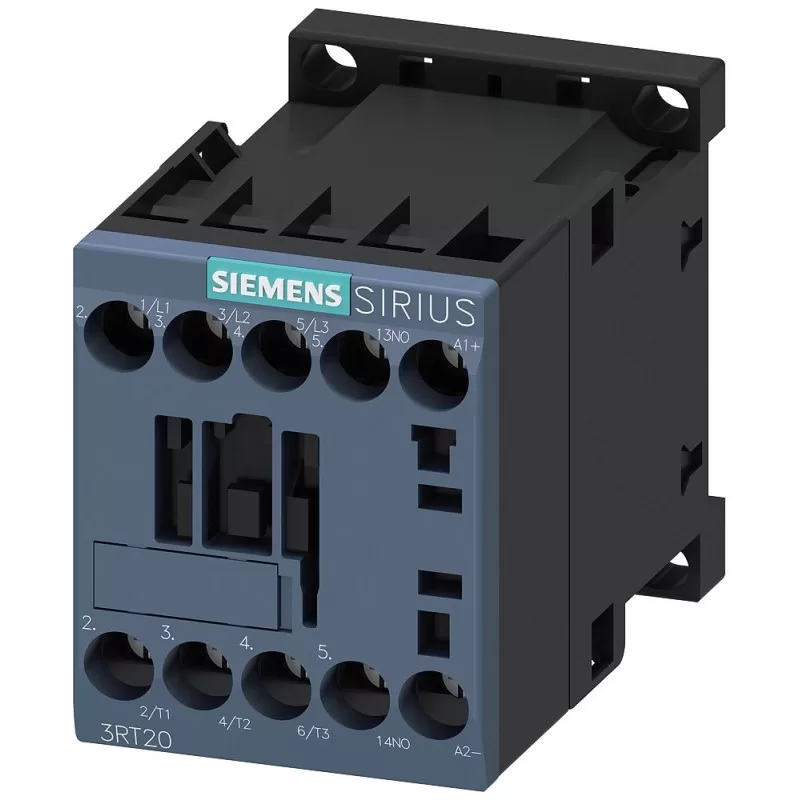Description
Siemens 3RT2016-1BB41 is a compact contactor designed for controlling electrical loads in various industrial and commercial applications. Let’s explore its key features, specifications, and applications:
Key Features:
- Compact Design: The contactor features a space-saving design, making it suitable for applications with limited installation space.
- High Switching Capacity: Capable of handling high currents and voltages, allowing for the control of heavy-duty electrical loads.
- AC Operation: Designed for alternating current (AC) operation, compatible with standard AC power supplies.
- Screw Terminals: Equipped with screw terminals for secure and reliable electrical connections, facilitating easy installation and maintenance.
- Auxiliary Contacts: Provides auxiliary contacts for additional control functions, such as signaling, interlocking, and control circuit switching.
- Coil Voltage: Available with different coil voltage options to match the voltage requirements of the control circuit.
- Mechanical Interlock: Some models may feature a mechanical interlock mechanism for preventing simultaneous closure of multiple contactors.
- Built-in Suppressors: Includes built-in suppressors to minimize contact arcing and prolong contactor lifespan.
Technical Specifications:
- Manufacturer: Siemens
- Series: 3RT20 Series
- Model Number: 3RT2016-1BB41
- Contact Configuration: Typically 3-pole (3 main contacts) with additional auxiliary contacts for control and signaling.
- Rated Current: Typically rated for currents up to 16 amps, suitable for a wide range of loads.
- Rated Voltage: Designed for operation at standard AC voltages, such as 230VAC or 400VAC, depending on the specific model.
- Coil Voltage: Available with various coil voltage options, such as 24VAC, 110VAC, or 230VAC, to match the control circuit voltage.
- Mounting: Suitable for DIN rail mounting, facilitating easy installation in electrical panels and enclosures.
- Enclosure: Typically housed in a durable and flame-retardant enclosure for protection against environmental factors and electrical hazards.
- Standards: Designed and manufactured in compliance with international standards and certifications for safety and performance.
Applications:
- Motor Control: Used for switching and controlling motors in industrial machinery, pumps, compressors, conveyors, and other motor-driven equipment.
- Lighting Control: Enables remote control of lighting circuits in commercial buildings, warehouses, and outdoor facilities.
- Heating and Cooling Systems: Provides switching and control functions for heating elements, air conditioning units, and ventilation systems.
- Power Distribution: Used in electrical distribution panels and switchgear for controlling power distribution to various loads and equipment.
- Automation Systems: Integrated into automation and control systems for switching and controlling loads based on predetermined logic and sequences.
Benefits:
- Reliability: Siemens contactors are known for their robust construction and reliable performance in demanding industrial environments.
- Versatility: Suitable for a wide range of applications and compatible with various control systems and components.
- Safety: Built-in features ensure safe and reliable operation, with protection against overloads, short circuits, and electrical faults.
- Ease of Installation: DIN rail mounting and screw terminals simplify installation, reducing installation time and labor costs.
- Longevity: Designed for long service life and minimal maintenance requirements, providing durable performance over time.
Before selecting and installing the contactor, it’s essential to consider the specific requirements of the application, including voltage, current, ambient conditions, and control system compatibility. Additionally, proper electrical protection and safety measures should be implemented in accordance with applicable standards and regulations.


